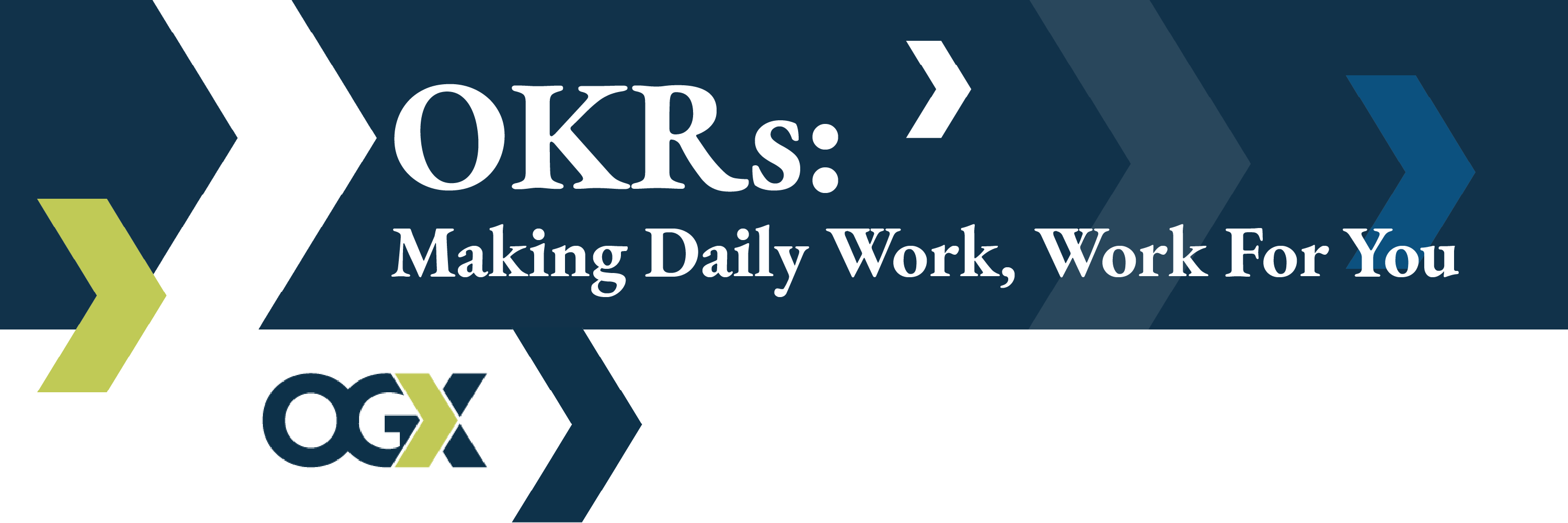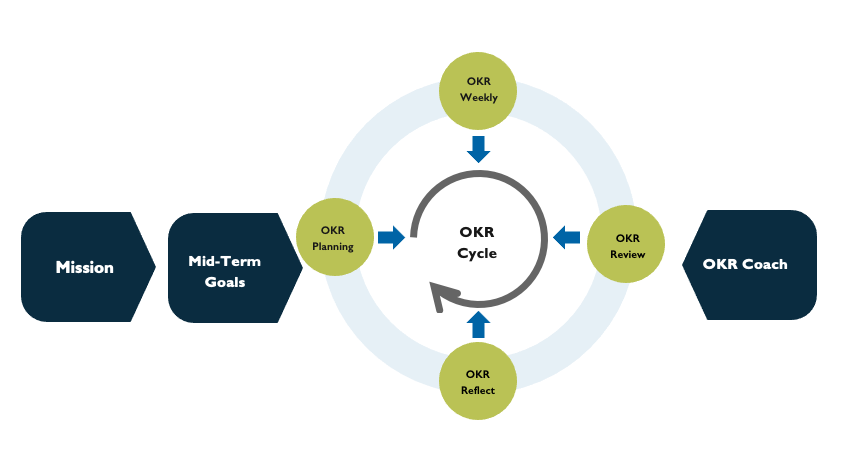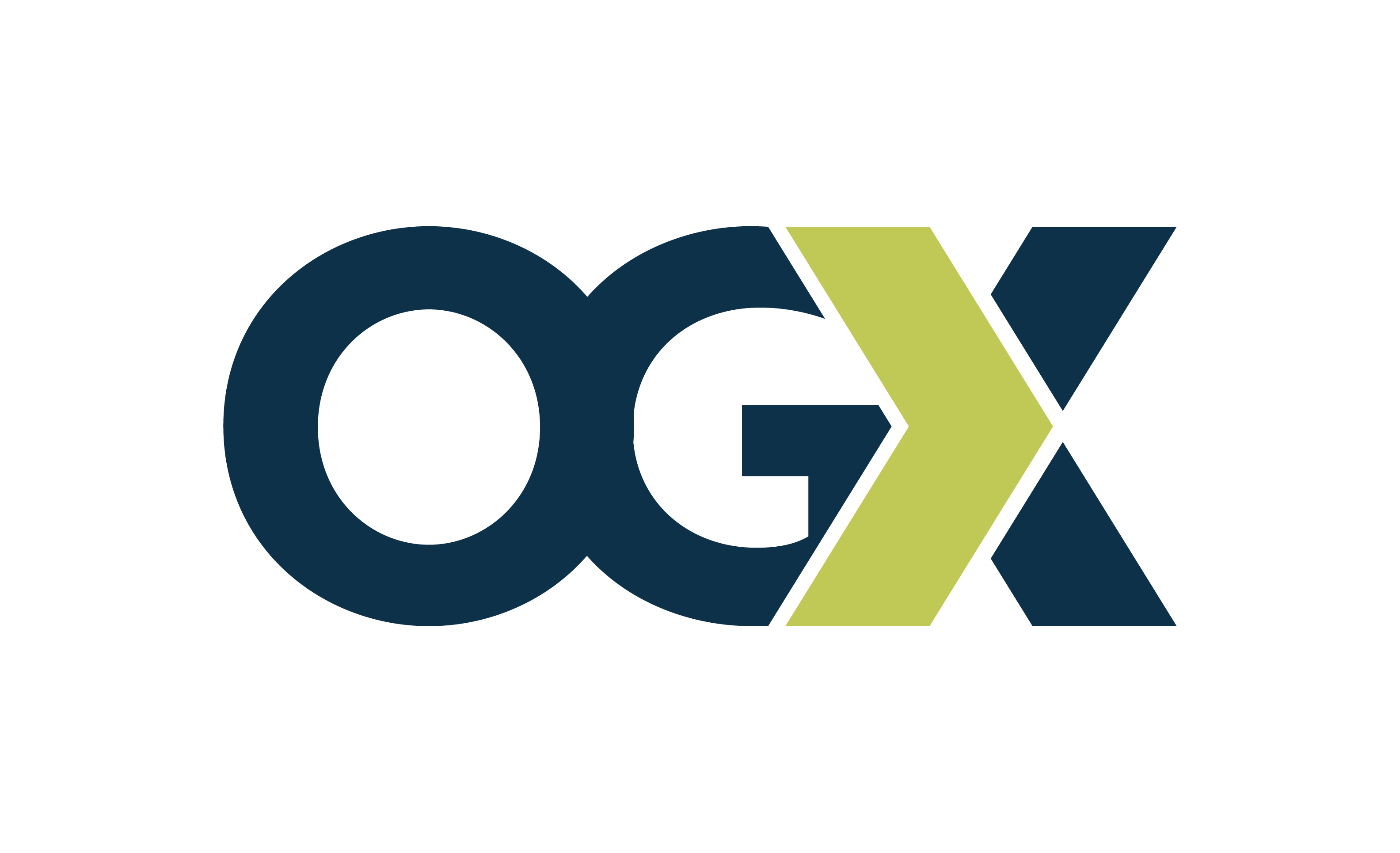
OKRs: Making Daily Work, Work For You
CONTRIBUTIONS BY: Tori Copeland, Sr. Consultant and Charles Leonard, Consultant
Effective goal planning and tracking is an integral part of growth and expansion for organizations of any size. Maintaining a data driven system to capture progress has been the driving factor towards success for many leading organizations. The leading methodology and industry standard for a data driven goal system is the OKR methodology. This report will walk through how and why to use OKRs as well as general tips for getting started.
Overview
As most organizations embark upon this brand-new year, there is a need and desire for them to set new goals and new strategy. Why is this important? As organizations look towards the future, there are many things they want to accomplish. In order to accomplish the desired goals, organizations need to prioritize and focus on specific areas. Traditional goals have not seemed to work for many organizations. Because of this, many organizations have begun to focus on OKRs. Some of the companies who have leveraged OKRs include Google, LinkedIn, Microsoft, Facebook, and a plethora of other firms. OKRs has been proven to be one of the most effective ways to getting things done.
Historical Context
The history of OKRs can be traced back to 1954 when Peter Drucker invented the concept of Management by Objectives (MBO). In 1968, Andrew Grove, co-founder and CEO of Intel, further developed Drucker’s MBO concept into the ORK framework we know today. John Doerr joined Intel in 1974 and learned the concept and framework of OKRs from Grove. Seeing the success and opportunities of using the OKR framework, Doerr introduced the methodology to Google. Google, along with many other organizations, has fully adopted the OKR framework and uses it in still today.

What are OKRs?
The acronym OKR stands for Objectives and Key Results. The OKR is a popular management strategy for goal setting within organizations. The purpose of OKRs is to connect company, team, and personal goals to measurable results while having all team members and leaders work together in one, unified direction. OKRs are typically implemented within specialized OKR software, like Asana.
The OKR Framework is a tool that will ensure you have a unified cadence of progress in your company and Bridge the Gap Between Strategy and Execution among your workforce.
With OKR transparency, everyone’s goals — from the CEO down — are openly shared. Individuals link their objectives to the company’s game plan, identify cross-dependencies, and coordinate with other teams.
By connecting each contributor to the organization’s success, top-down alignment brings meaning to work. By deepening people’s sense of ownership, bottom-up OKRs foster engagement and innovation.
Getting Started with Objectives
An Objective is a description of a goal to be achieved in the future. An Objective sets a clear direction and provides motivation. An Objective can be thought of as a destination on a map.
“Where do I want to go?” An Objective describes where you want to go and sets a clear direction. Think of it as a point on a map, a destination like New York.
Goals, tell you where to go and your Objectives help you get there. Your Objectives should be high-level, qualitative, and actionable; aim for 3-5 Objectives.
Getting Started with Key Results
A Key Result is a metric with a starting value and a target value that measures progress towards an Objective.
“How do I know if I’m getting there?” A Key Result shows you how you’re progressing towards your Objective. Think of it as a signpost with a distance marker.
Your Key Results should be measurable & quantitative, ambitious, SMARTER, make objectives achievable, and lead to objective assessing; aim for 3-5 Key Results.
Getting Started with Initiatives
An Initiative is a description of the work you’ll do to influence a Key Result. If an Objective is your destination and a Key Result shows the distance to go, an Initiative describes what you’ll do to get there.
“What will I do to get there?” An Initiative describes what you’ll do to influence your Key Results. Think of it as the list of actions or tasks you’ll complete to get to your destination.

Why use OKRs?
Using OKRs – Objectives and Key Results – in 2022 and beyond gives companies the edge of getting things done and holding yourself and others accountable. OKRs allow you to:
1. Focus and commit to priorities
2. Align and connect for teamwork
3. Track for accountability
4. Stretch for accountability
Benefits of OKRs
OKRs are a strategic way to make sure your team’s work is adding to the overarching goals of your company. By implementing OKRs throughout your company you will gain the following benefits:
Strategic Alignment
OKR helps managers and employees align the work they do, ensuring everyone in the organization is moving in the same direction.
Focused Execution
OKR help teams focus only on what’s most important by prioritizing only the work that has the biggest business impact.
Engaged Employees
People achieve remarkable results when they’re engaged with a purpose. OKRs help communicate and execute strategy in a way everyone understands. By utilizing OKRs you will connect company vision, mission, values, and strategy with day-to-day work, establish objectives and enables the best use of resources, set and track the right priorities, measure success without the pressure to perform, create transparency and improves communication, encourages an autonomous work environment and connect daily work directly to Team and Company goals.
OKRs Goals Cycle

Company Level Planning
1. 5 weeks before the start of the quarter – Brainstorm Company Level OKRs
2. 2 weeks before the start of the quarter – Communicate and finalize Company Level OKRs
3. 1 Week before the start of the quarter – Develop Team Level OKRs
4. Start of quarter – Communicate and finalize Team Level OKRs, begin OKR cycle
Individual Brainstorming
1. 1 Week into quarter – Finalize and share Individual OKRs
2. Continuously through the quarter – Track progress and give feedback
Check-ins
1. Mid-quarter formal check-ins
2. Monthly team/department meeting with updates
3. Weekly updates from owners
4. 1 week before end of quarter – Close and score OKRs, reflect and repeat process

